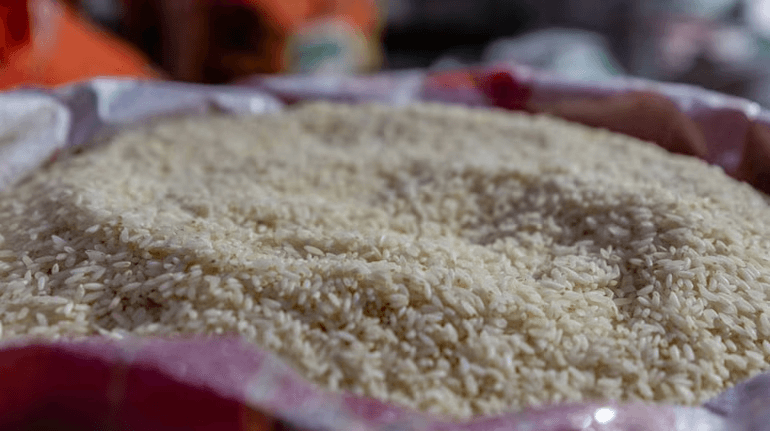Tags
Rice stocks with government are at record levels; it’s time to allow exports
In the last 10 years, rice stocks were never as high but inflation is in double digits possibly because high procurement is squeezing supply in private market. Lifting export restrictions can ease pressure to procure and thereby restore balance.
Siraj Hussain

So far, the monsoon gods have been kind. The deficiency of rains in some parts of India in June has been wiped out by good rains in July and August. Most of India has received good rains in the first ten days of August.
If good rainfall continues in the remaining period of August and September, rice production should reach the target of 136.30 million tonnes (mt). This may bring down rice inflation and the Government’s central pool stocks may further swell which will mean higher carrying cost.
Rainfall deficiency in Punjab may not matter
By the end of July, Haryana and Punjab recorded percent 43 and 45 percent deficient rainfall respectively. In the first 10 days of August, Haryana has received good rains, and the deficiency is now down to 23 percent. But Punjab, a major contributor to rice procurement for central pool, continues to have cumulative deficiency of 43 percent. It will not have an adverse impact on production of rice, but it means that underground water resources will not be recharged sufficiently. From a long-term perspective, this is not good news.
State government top-ups will boost procurement
To compensate farmers for higher input cost on diesel, Haryana, where state elections are due in October 2024, has announced bonus of Rs 5,000 per hectare for all kharif and horticulture crops. Punjab, with a higher deficiency of rainfall has not announced any bonus. Chhattisgarh and Madhya Pradesh are committed to provide a bonus of Rs 917 per quintal of paddy.
It means that rice procurement in Kharif Marketing Season 2024-25 (October – September) may again reach 60 mt.
Last year, seven subdivisions (18 percent of the total area) received deficient monsoon rainfall. These include rice producing regions like Gangetic West Bengal, Jharkhand, Bihar, East UP, South interior Karnataka and Kerala. For reasons which are not adequately explained, the rice production in 2023-24 did not suffer much and as per 3rd advance estimate (June 2024), rice production was 136.7 mt, as compared to 135.75 mt in 2022-23. Even the yield was higher at 2.87 tonne/ha as against 2.83/ha.
As a result of a ban on export of broken and raw rice (white rice) and export duty of 20 percent on par boiled rice, the export of rice in 2023-24 was 11.11 mt against 17.86 mt in 2022-23. By the end of June 2024, rice procurement was 52 mt, only 4.6 mt lower than 56.6 mt in June 2023.
Overflowing granaries…
The result of high procurement in 2023-24, despite poor rainfall in several states is that the central pool stock of rice on August 1, 2024, was 45.48 mt. This includes 32.75 mt of rice already received and another 12.73 mt of rice which is yet to be milled. The buffer norm for October 1 is 10.25 mt. So, the government would be carrying about four times more stock of rice than the buffer norm. In the last 10 years, rice stocks were never as high.
With double digit inflation
Despite high production and restrictions on export, consumer price inflation in rice since October 2022 has been in double digits. If production estimate of the government is correct, it is possible that due to high procurement of rice by the government, the supply in private market is lower, causing inflation.
So, what are the options before the government to reduce its carrying cost due to excessive rice stock?
1. Export from central pool stocks:This is not possible due to commitment in WTO. As per the peace clause agreed at WTO’s 2013 Bali Ministerial Conference, the government has to avoid distorting trade which includes affecting prices and volumes on world markets. The government is required to provide information to WTO to show that this condition is being met.
2. Sale under Open Market Sale Scheme:In case of wheat, there are bulk buyers like flour mills which purchase wheat and sell wheat products. In case of rice, such bulk buyers are not available. This is why sale of rice under OMSS has not quite been successful.
3. Distribution as Bharat Rice:Subsidised sale of rice has been undertaken by the Government through Nafed, NCCF and Kendriya Bhandars. The sale points of these organisations in the states and UTs are quite limited (except in Delhi where such sale can take place through Mother Dairy booths).
4. Additional allocation under PDS:Faced with similar situation during Covid-19, the Government provided an additional quantity of 5 kg food grains per person per month. It is possible to repeat it but the wheat stock in central pool is quite limited and giving additional quantity of wheat is not possible.
5. Allocate rice for ethanol:In 2021-22 and 2022-23, the FCI released rice from its stock for ethanol. Even though it is possible to repeat this, it would be a bad policy choice to use water guzzling crop for ethanol blending of petrol.
6. Remove restrictions on export:This is the most suitable and likely option. It will ease the pressure on government agencies to procure paddy at MSP.
The food grains under legal commitment of National Food Security Act 2013 (now renamed as Pradhan Mantri Garib Kalyan Anna Yojana), are now provided free. In the past, the governments have been reluctant to use ration shops to sell wheat or rice under OMSS (at a higher price).
The government will do well to consider various options and quickly announce its policy for coming KMS. If export of non-basmati is to be decanalised (at present it’s allowed only through National Cooperative Export Limited), the private trade should get sufficient time to seek orders in the global market.
For the long-term, incentivising cultivation of pulses and oilseeds, rather than rice, may be a good policy choice.
https://www.moneycontrol.com/news/opinion/rice-stocks-with-government-are-at-record-levels-its-time-to-allow-exports-12793212.htmlPublished Date: August 12, 2024







